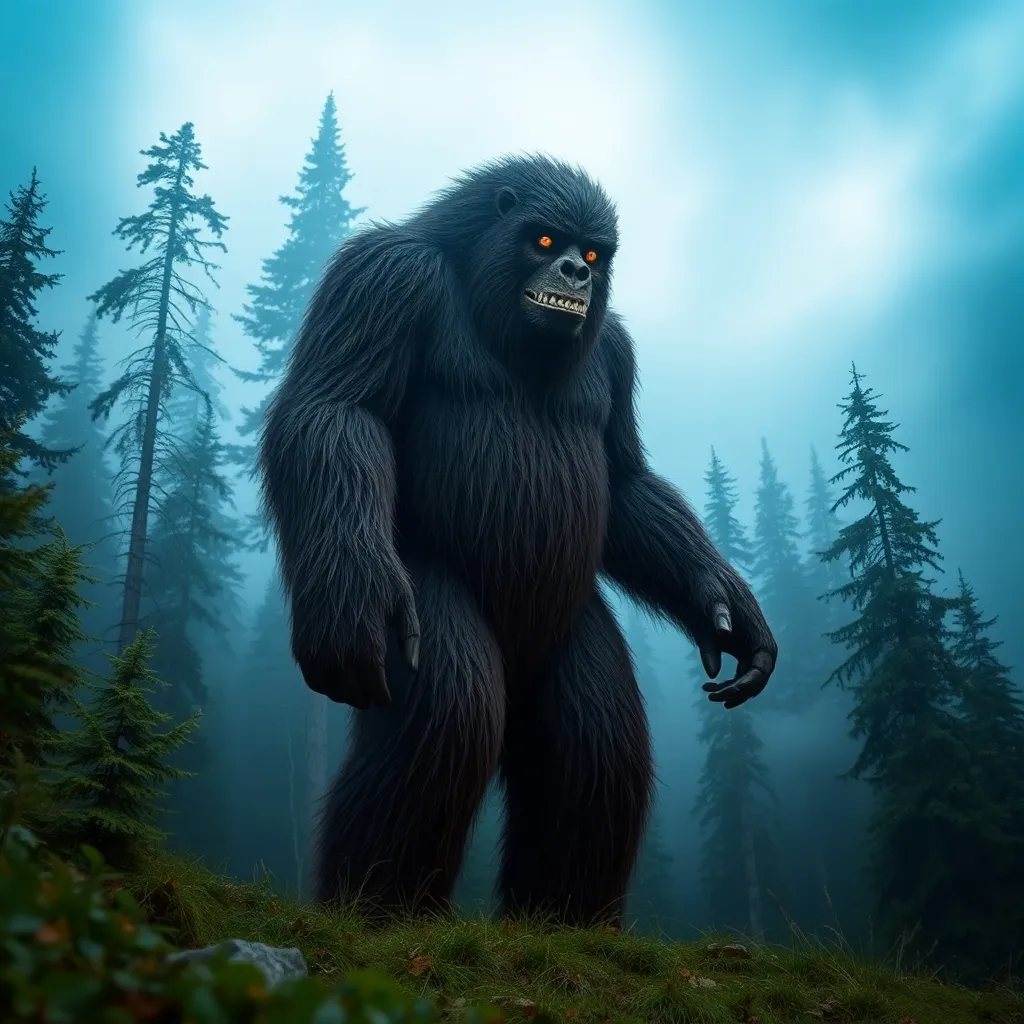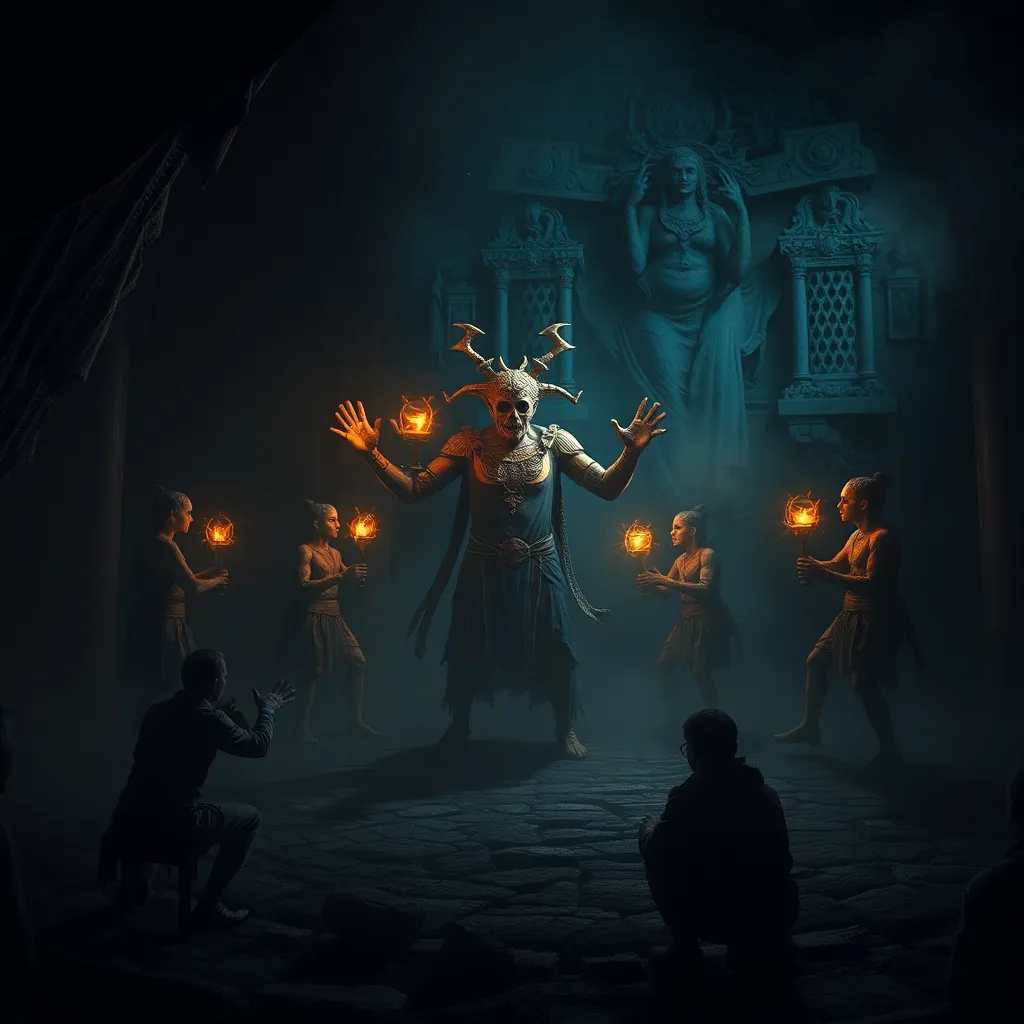Sasquatch: The Woodland Guardian of the Pacific Northwest
I. Introduction
The legend of Sasquatch, often referred to as Bigfoot, is a fascinating aspect of folklore that captures the imagination of many. This elusive creature, said to roam the dense forests of the Pacific Northwest, has become a symbol of mystery and intrigue. The importance of Sasquatch in the culture of this region cannot be overstated, as it represents not only a connection to the wilderness but also a rich tapestry of stories woven by the Indigenous peoples of the area. This article aims to explore the various facets of the Sasquatch legend, from its historical roots to its impact on modern culture and conservation efforts.
II. Historical Background of Sasquatch Myths
Sasquatch legends have deep historical roots in the Indigenous cultures of the Pacific Northwest. Many tribes, such as the Salish and the Coast Miwok, have their interpretations of the creature, often depicting it as a guardian of the forest. These stories, passed down through generations, serve to teach respect for nature and the importance of coexisting with the wilderness.
The evolution of Sasquatch mythology over time is evident in the changing narratives surrounding the creature. Initially viewed primarily as a mythical guardian, Sasquatch has transformed into a subject of fascination and skepticism in contemporary society. Key figures in Sasquatch history, such as American explorer Paul Freeman, who in the 1980s captured what many believe to be the most credible footage of the creature, have helped to keep the legend alive.
III. Physical Characteristics and Behavior
Sasquatch is often described in folklore as a large, ape-like creature, standing between 7 and 10 feet tall, with long arms and a stocky build. Its fur is typically depicted as dark brown or black, blending seamlessly with the forest environment. Witnesses often report its distinctive, foul odor, which adds to the mystique surrounding its presence.
Behavioral traits attributed to Sasquatch include:
- Elusiveness: Sasquatch is said to avoid human contact, often disappearing into the shadows.
- Vocalizations: Many reports include descriptions of loud howls or screams that echo through the woods.
- Tree structures: Some enthusiasts claim that Sasquatch creates structures in the forest, such as bent trees or piles of branches, which they interpret as markers of its territory.
When compared to other cryptids and hominids, Sasquatch shares similarities with creatures like the Yeti of the Himalayas and the Australian Yowie. However, Sasquatch’s unique place in North American folklore sets it apart as a distinctly cultural phenomenon.
IV. Sasquatch in Popular Culture
The representation of Sasquatch in popular culture is vast and varied, ranging from documentaries to feature films. Notable movies such as “Harry and the Hendersons” and “The Legend of Boggy Creek” have contributed to the creature’s mythos, often portraying it as a misunderstood gentle giant.
The impact of media on public perception of Sasquatch has been significant. As sightings and stories gained traction, the creature transitioned from being a mere myth to a subject of serious investigation and public fascination. Notable documentaries, such as “Sasquatch: Legend Meets Science,” attempt to explore the intersection of folklore and scientific inquiry, further fueling interest in the subject.
V. Scientific Perspectives and Skepticism
Scientific research on Sasquatch exists at the intersection of folklore and empirical study. While many scientists remain skeptical about the existence of such a creature, some researchers, like Dr. Jeffrey Meldrum, have dedicated time to studying footprints and other evidence purported to belong to Sasquatch.
Common arguments for Sasquatch’s existence include:
- Eyewitness accounts: Thousands of sightings have been reported over the years.
- Footprint evidence: Casts of large footprints have been analyzed, with some claiming they exhibit unique features.
- Unexplained vocalizations: Numerous recordings of strange sounds in the wilderness have sparked curiosity.
Conversely, skeptics argue against Sasquatch’s existence by pointing out:
- Lack of physical evidence: No verifiable specimens have ever been found.
- Psychological factors: Many sightings can be attributed to misidentifications or hoaxes.
- Folklore origins: Some believe Sasquatch is merely a cultural artifact rather than a real creature.
VI. Sasquatch and Environmental Conservation
Sasquatch serves as a powerful symbol of wilderness preservation. The creature’s association with the dense forests and unspoiled nature of the Pacific Northwest has made it a rallying point for environmental advocates. Many conservation efforts emphasize the need to protect the habitats that Sasquatch is believed to inhabit.
Community efforts to protect these habitats include:
- Local conservation groups advocating for forest protection.
- Educational programs aimed at raising awareness about the importance of biodiversity.
- Collaborations with Indigenous communities to promote sustainable practices.
The intersection of mythology and environmental advocacy showcases how Sasquatch can inspire a deeper connection to nature and encourage stewardship of the land.
VII. Modern-Day Sasquatch Encounters
Notable sightings and evidence reported in recent years have continued to pique public interest. Enthusiasts frequently share their encounters on social media, while online forums provide platforms for discussion and investigation.
The role of technology in Sasquatch research has evolved, with advancements such as:
- Trail cameras: Used to capture images of wildlife, including potential Sasquatch.
- Drones: Employed for aerial surveys of remote areas.
- Audio recording devices: To document unusual sounds in the wilderness.
Community engagement is also crucial, with local Sasquatch festivals celebrating the legend, featuring speakers, workshops, and opportunities for enthusiasts to share their experiences.
VIII. Conclusion
The significance of Sasquatch in the Pacific Northwest is multifaceted, encompassing elements of cultural heritage, environmental advocacy, and scientific inquiry. As a figure that bridges the gap between folklore and reality, Sasquatch continues to captivate the imagination of many. The enduring allure of this myth invites further exploration and appreciation for the stories and traditions that shape our understanding of the natural world.
As we delve deeper into the legend of Sasquatch, we are reminded of the importance of preserving our wilderness and the creatures—real or mythical—that dwell within it.




